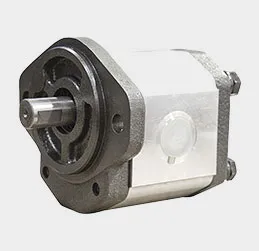Applications of Sand Casting in Manufacturing Components and Products
What is Sand Casting Used to Make?
Sand casting is a highly versatile and widely used manufacturing process for creating metal parts and components. This technique involves shaping a mold from a mixture of sand and a binding agent, then pouring molten metal into the mold to produce a finished item. The uses of sand casting are numerous and span various industries, from automotive to aerospace and beyond. In this article, we will explore the primary applications of sand casting and the benefits that make it a valuable method in metal fabrication.
One of the most significant applications of sand casting is in the automotive industry. Many complex parts, such as engine blocks, cylinder heads, and transmission cases, are produced using this method. The ability to create intricate designs with precise specifications is crucial in automotive manufacturing, where performance and reliability are paramount. Sand casting allows for the production of large components that would be difficult to achieve through other methods, such as die casting.
Another significant industry that benefits from sand casting is construction. Components such as fixtures, fittings, and architectural details are often produced using sand casting. The process allows for the creation of unique and artistic designs that can enhance the aesthetic quality of buildings. Moreover, sand casting enables the production of durable metal components that can withstand the rigors of construction environments.
Beyond automotive and construction, sand casting is also prevalent in the aerospace industry. Highly specialized components like gas turbine engine parts, brackets, and housings are often made using this method. The ability to produce lightweight yet strong metal parts is essential in aerospace applications, where every ounce of weight can affect performance and fuel efficiency. Sand casting facilitates the intricate designs required for such components, making it a preferred choice for aerospace manufacturers.
what is sand casting used to make

Marine applications also benefit from sand casting, particularly in the creation of components that must withstand harsh environmental conditions. Parts like boat hulls, engine mounts, and various fittings require high corrosion resistance and strength. Sand casting provides the necessary flexibility in design and material choice, allowing manufacturers to create parts that are not only functional but also durable.
Additionally, sand casting is employed in the production of industrial machinery components. Various machinery used in manufacturing processes, such as pumps, valves, and housing structures, often utilize sand-cast parts. This method enables manufacturers to produce custom-designed components tailored to specific machinery requirements, improving efficiency and longevity.
The advantages of sand casting extend beyond its applications. It is a highly cost-effective method, especially for low to medium production runs. The materials used—primarily sand—are abundant and inexpensive, and the molds can be reused multiple times, reducing waste. Furthermore, the process is relatively straightforward, allowing for the rapid production of complex parts without the need for extensive tooling or setup.
In conclusion, sand casting plays a crucial role in the manufacturing of a wide range of products across various industries. Its versatility allows for the creation of complex components with high precision, making it indispensable in automotive, aerospace, marine, construction, and industrial machinery production. As technology advances, sand casting continues to evolve, offering innovative solutions and applications that meet the demands of modern manufacturing. With its numerous benefits, sand casting is likely to remain a preferred choice for fabricating metal parts for years to come.
-
Precision Sheet Metal Stamping Manufacturer | Fast & ReliableNewsAug.01,2025
-
OEM Sand Cast Pump Valve Fittings - Baoding Hairun Machinery And Equipment Trading Co., Ltd.NewsAug.01,2025
-
Custom OEM Impellers | High Efficiency & PrecisionNewsAug.01,2025
-
OEM Sand Cast Pump Valve Fittings - Baoding Hairun Machinery | Customization, Quality AssuranceNewsAug.01,2025
-
OEM Sand Cast Pump Valve Fittings - Baoding Hairun Machinery And Equipment Trading Co., Ltd.NewsAug.01,2025
-
OEM Sand Cast Pump Valve Fittings - Baoding Hairun Machinery And Equipment Trading Co., Ltd.NewsJul.31,2025















